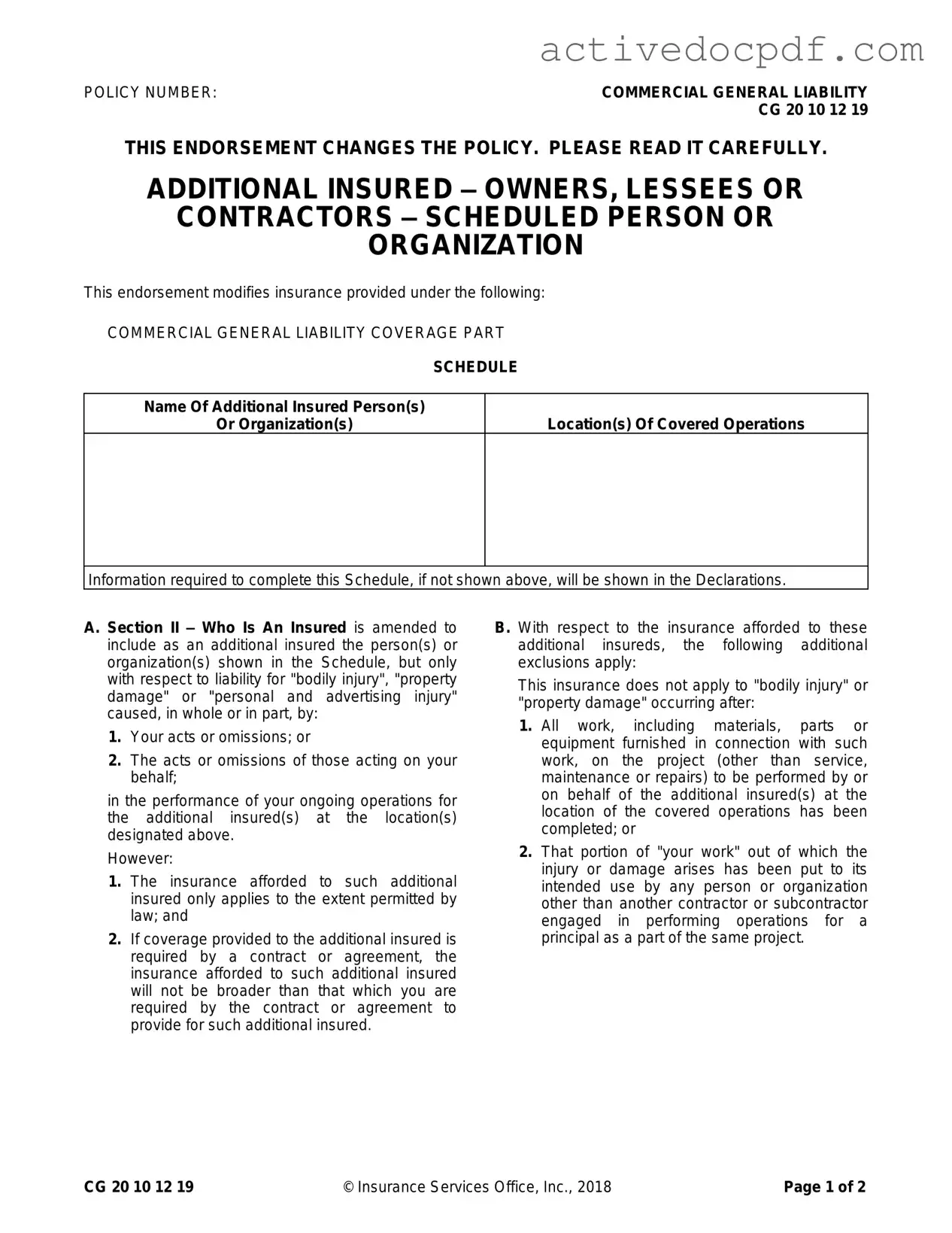The CG 20 10 07 04 Liability Endorsement form serves to add additional insured parties to a commercial general liability policy. This endorsement is particularly useful for contractors or service providers who need to provide coverage for owners, lessees, or contractors as specified in a contract or agreement.
Who qualifies as an additional insured under this endorsement?
Additional insureds are specified in a schedule within the endorsement. They can include individuals or organizations that the policyholder is required to cover under a contract. This coverage is limited to liability for bodily injury, property damage, or personal and advertising injury that arises from the acts or omissions of the policyholder or those acting on their behalf.
What types of injuries or damages are covered?
The endorsement covers bodily injury, property damage, and personal and advertising injury. However, this coverage only applies if the injury or damage is caused, in whole or in part, by the acts or omissions of the policyholder during their ongoing operations for the additional insured at the specified locations.
Are there any limitations on the coverage provided?
Yes, there are limitations. The coverage only applies to the extent permitted by law. Additionally, if the contract or agreement requires coverage for the additional insured, the insurance provided cannot be broader than what is required by that contract.
What exclusions apply to the coverage for additional insureds?
The endorsement specifies that coverage does not apply to bodily injury or property damage occurring after certain conditions. These include:
-
All work related to the project has been completed, including any materials, parts, or equipment.
-
The portion of the work that caused the injury or damage has been put to its intended use by someone other than another contractor or subcontractor involved in the same project.
How does the endorsement affect the limits of insurance?
The endorsement does not increase the applicable limits of insurance. If the contract requires coverage for the additional insured, the maximum amount payable is the lesser of the amount required by the contract or the available limits of insurance.
Is there a requirement for the policyholder to notify the additional insured?
Can the endorsement be modified or canceled?
Modifications or cancellations of the endorsement typically depend on the terms of the underlying policy and any contractual agreements. It is essential to review these documents to understand the process for making changes.
For more information, refer to the insurance policy documents or consult with an insurance professional. They can provide specific guidance based on individual circumstances and needs.
